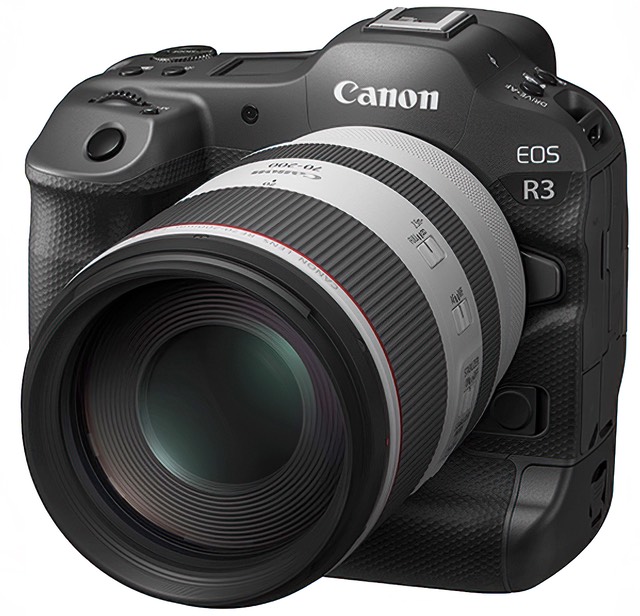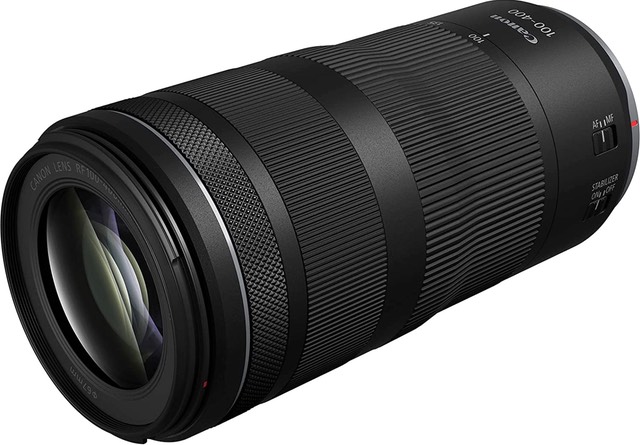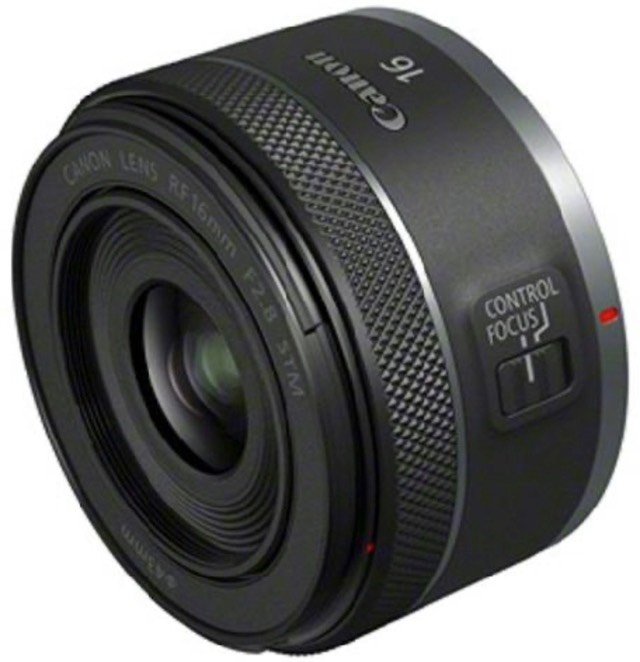For top pro cameras, consider this:
- DSLR era: Nikon first, Canon second, Minolta (Sony) last.
- Mirrorless era: Sony first, Canon second, Nikon last.
That Canon would move second was actually predictable, in both cases. But it also reveals something else.
Nikon had slumped so far in the film SLR era that they needed to be first mover with a pro body to change the status quo (and did). Once Nikon started moving top pros from film to DSLR, Canon had to immediately respond, and did so quickly. At the beginning of the mirrorless era, Sony wanted to get out of their third place ILC funk badly enough that they became the first mover with a true top pro body (which they iterated into from the A9). Once Sony made their big move and clearly began attracting pros, Canon had to respond quickly. Just as before.
The question is what did Canon respond to? I believe that the R3 is actually a response to the A9/A9 Mark II. Timing wise, it can’t be a response to the A1 (not enough development time, and wrong specs). Which is why Canon’s initial top pro mirrorless camera comes out with the R3 name and not R1. And why it’s not an 8K camera with high pixel count, but instead a 24mp full frame 6K camera (4K oversampled). And why it's US$5999 and not higher priced. Canon is moving second, but Sony has been moving fast enough that Canon’s response is not leap-frogging, as the Canon/Nikon game used to be played.

So what is the R3?
Well, the R3 is a slightly downsized and mirrorless incarnation of the 1DX, basically. Strongly built weather-proof body with integrated vertical grip and controls. Big battery. Controls suitable for use with gloves. FTP over LAN as well as wireless. 30 fps blackout-free viewfinder (12 fps mechanical shutter), dual pixel autofocus, sensor-based image stabilization, and much more. All the pro-caliber features, but fronted with Canon’s RF lens mount, not an EF one.
The story that gets everyone's attention, though, is the image sensor in the R3, which is 24mp. At the time Canon started work on a stacked image sensor, the top pro cameras were 20mp, 20mp, and 24mp (Canon, Nikon, Sony). The progression had been 12mp to 16/18mp to 20mp. So 24mp probably seemed like the right idea to Canon (they could have probably pushed upwards to 32-36mp, but that might have seemed like a big leap to keep the perceived high ISO capabilities intact). In essence, Canon thought 8K was further out for the photo journalism and sports photographer than it turned out to be when the R3 sensor development likely started. To some degree, the R3/R5 combo may have been more of an attempt to echo Nikon's D5/D850 success, while dealing with that upstart Sony.
As much as some will deride the R3 for “not exactly matching” the Sony A1, from a Canon 1DX user’s standpoint the R3 still represents a much needed dual move forward. In terms of sensor and performance, the R3 seems like a clear step forward from the 1DX Mark III, so Canon can still encourage their DSLR pros to start their transition to mirrorless. The R3 is also a step up in key ways from the R5 and R6 for some uses, so Canon will almost certainly end up with photographers who have both the R3 and an R5 in their bag, much like Nikon ended up with D5/D850 photographers in the DSLR realm. So "success", if that's what their target was.
From a Canon user standpoint, the R3 is a solid top of the lineup. No doubts on that, at all. That's called "holding serve."
For someone with no brand affiliation, unfortunately the R3 doesn’t seem to top the Sony A1 in anything other than body build. Thus, I’m sure we’ll see an R1 two years out. Whether Sony can continue to stay in front of Canon will be an interesting story to watch (e.g. A1 Mark II versus R1), but I suspect that things will flush out much like they did with Canon/Nikon DSLR: the two brands will first be close together at some future point, then start leapfrogging.
So what’s with the Nikon Z9? Well, it’s going to be last to the pro mirrorless game (though not by much; I believe it's going to be delivered about a month behind the Canon shipment date), so the Z9 is going to need to be truly a top end to hold serve with Nikon pros. Given what we already know and some of the additional things I’ve been told, Nikon’s been aiming for that leapfrog position already, even if it is only a small gain past the A1. That’s going to put Nikon and Sony at 45-50mp/8K versus Canon at 24mp/4K for awhile, which brings us back to why an R1 is inevitable.
You’d think Nikon would have learned from history, but management changes and mandated priorities from top management took the Imaging group's eyes completely away from what worked in the past. Enough so that a few significant Nikon Imaging key personnel moved from Nikon to Fujifilm and Sony while new management dithered, a staffing migration that’s a little unusual in Japan. It appears now, though, that the deep state of Nikon engineering has gotten back into stride; the Z9 should be a strong statement of what Nikon can do.
Current state of top pro mirrorless cameras:
- Canon R3 — 24mp, 30 fps, 6K, tough body build, US$6000
- Canon R5 —45mp, 20 fps, 8K, small body build, US$3900
- Nikon Z9 — 45mp, 30 fps, 8K, tough body build, US$6500? (unknown for sure, but this is likely)
- Sony A1 — 50mp, 30 fps, 8K, small body build, US$6500
- Sony A9 Mark II — 24mp, 30 fps, 4K, small body build, US$4500
Next on our list of things to discuss will be how technologies leak down from the R3, Z9, and A1 to other models in those company's lineups. BSI stacked image sensors seem like they will do exactly that, at least in the upper range of ILC. But what else? I’ll get to that discussion once I’ve had time to use all the new cameras.

Along with the R3, Canon announced two very non-R3 lenses (e.g. compact and inexpensive, targeted towards a different user).
The most interesting is the US$649 100-400mm f/5.6-8 IS USM telephoto zoom. This lens is a really good example of how you can't have it all (size, speed, quality, price, etc.). Canon has made some compromises that are different than we've seen elsewhere so far, emphasizing small "reach" coupled with inexpensive, but that obviously comes at the expense of glass real estate. In particular, the front elements, which typically determine maximum aperture. We've been creeping up on this for some time: originally f/5.6 was the typical aperture at the long end of less expensive telephoto lenses, then f/6.3, then f/7.1, and now f/8. Smaller apertures mean smaller elements up front, which make for smaller size and less cost.
Canon, however, has found a couple of things to help compensate for what you gave up, and they both come in the "small reach" category. First, this new compact telephoto zoom focuses to a maximum magnification of 1:2.4, which is getting near macro range. So close in reach is pretty good (though variable on this lens depending upon focal length; again, you can't have everything). Second, Canon allows use of the RF 1.4x and 2.0x teleconverters with the 100-400mm f/5.6-8 lens. Yes, an even smaller effective aperture. When you give up that much aperture, you often need higher ISO to retain shutter speeds. Effectively you have a 140-560mm f/8-11 or a 200-800mm f/11-16 lens with the converters mounted.
Curiously, the 100-400mm and 1.4x/2.0x combos start to render the 600mm f/8 and 800mm f/11 compact RF telephoto lenses Canon makes a bit more moot, as they only gain you a stop while giving up the zoom flexibility. Given the price of US$649 for the 100-400mm, I can see most amateur and casual Canon RF users opting for the flexibility of the zoom over the fixed telephotos. If Canon can replace the RP with a great entry camera, Sony is going to see lower end market share erode quickly.

The other lens is also remarkable: a US$299 16mm f/2.8 prime in the typical STM guise and muffin size. That sure sounds like it's really destined for an APS-C body (24mm equivalent). But yes, it covers the full frame, too. Canon is playing up the use of this lens in vlogging and Webcam use, as well.
Support this site and purchase from the following advertiser:
